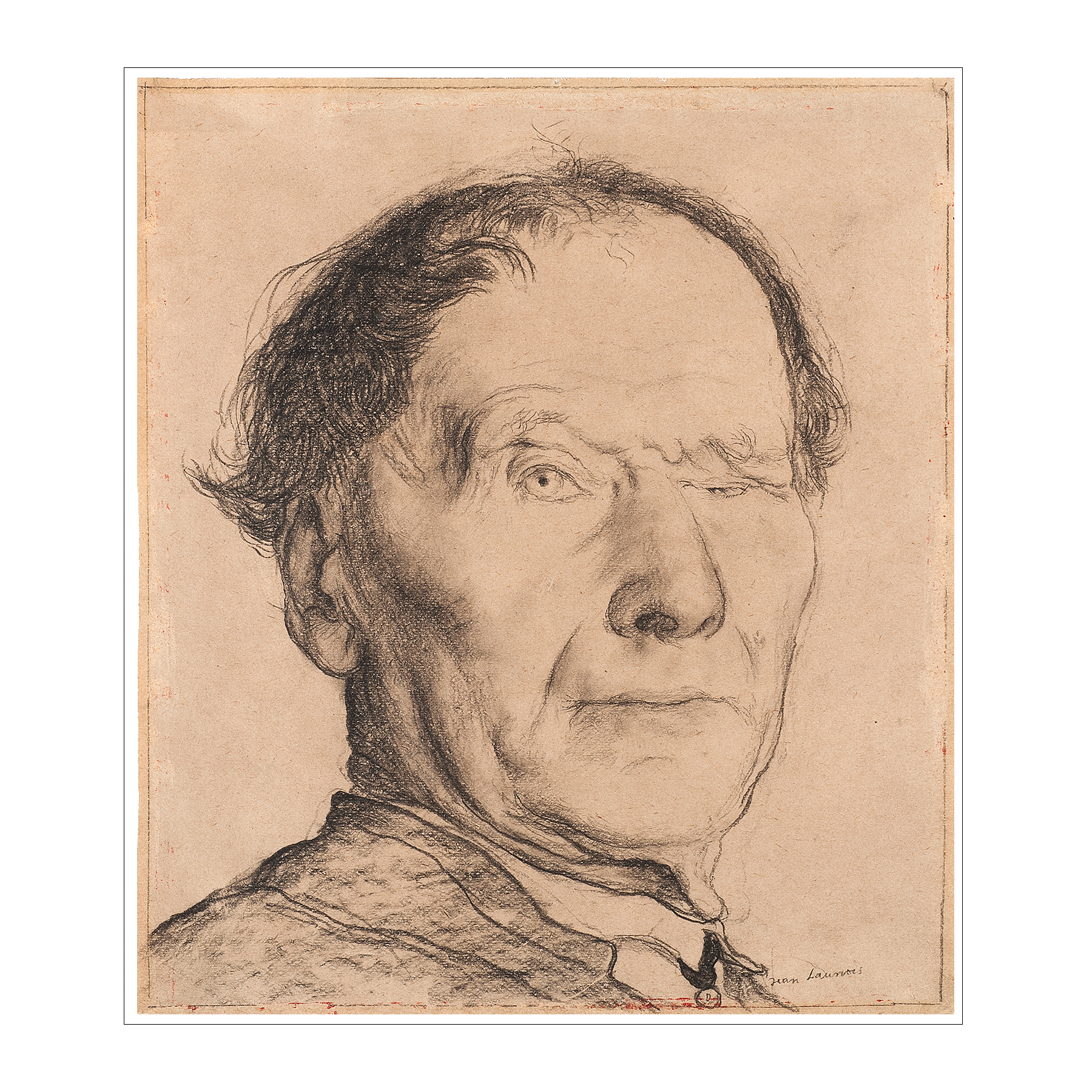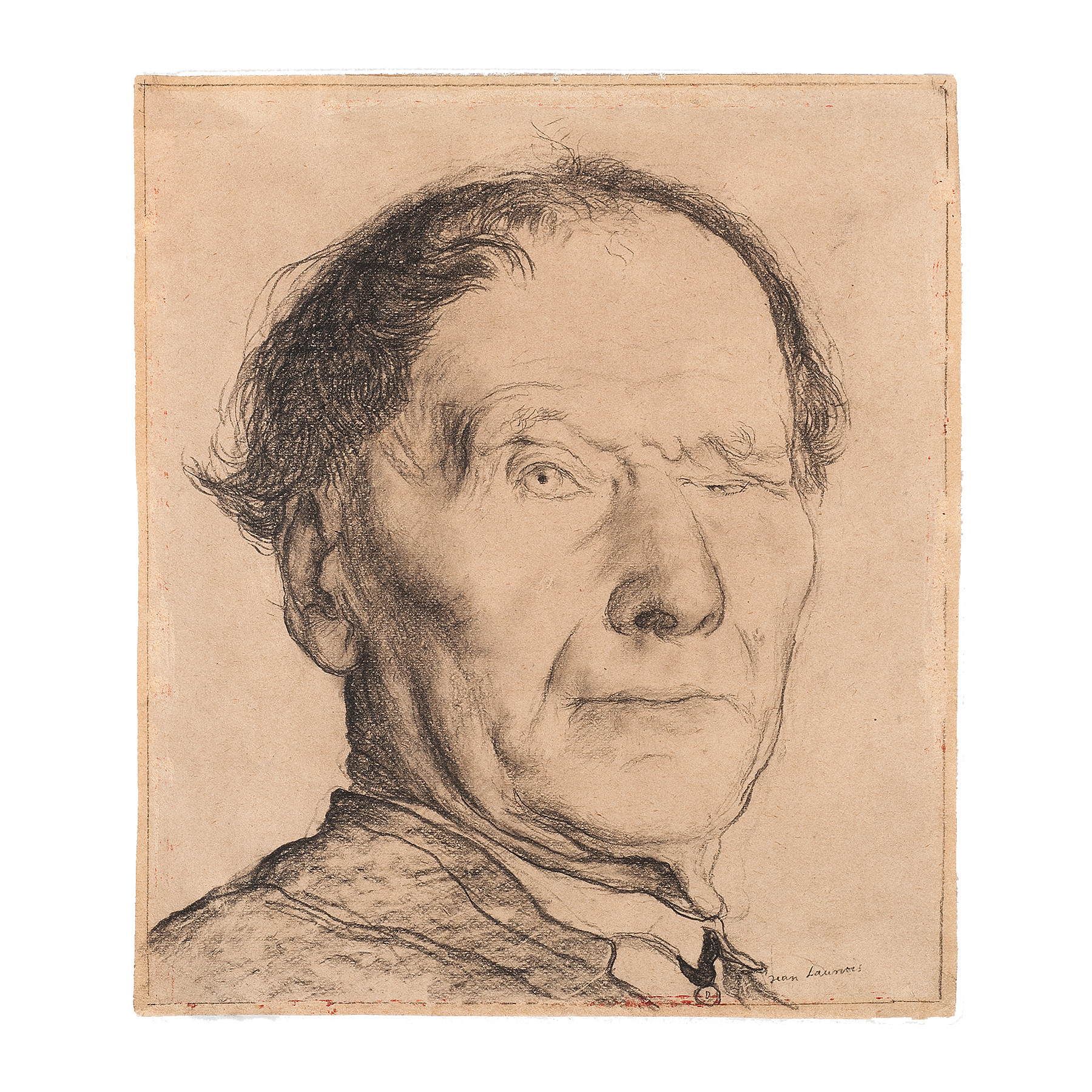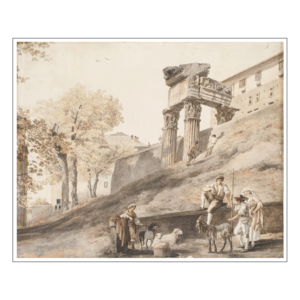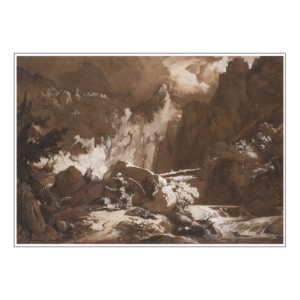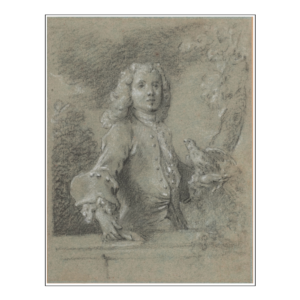Jean Launois
Sables-d’Olonne 1898 – Alger 1942
Portrait of a one-eyed man
Black chalk, stumping. Framing lines with the black chalk. Signed Jean Launois lower right.
139 x 120 mm – 5 1/2 x 4 3/4 in.
Provenance – Alfred Normand Collection , his stamp (Lugt 153 c) at the back lower right.
Born in Vendée, Jean Launois showed an early talent for drawing which was encouraged by his parents. He was trained by his fellow Vendeans Charles Milcendeau and Auguste Lepère, then entered the Académie Julian in Paris.
Drafted in the First World War in 1916, he continued to draw on the front and made many portraits of soldiers which he showed to the curator of the Luxembourg museum Léonce Bénédite in 1918. The latter bought several works from the artist, including the magnificent portraits Charlot and Caporal en bonnet de police, today in the Centre Georges Pompidou. It is in this period that he painted the portrait of Anatole France which appeared on the cover of L’Illustration on 1 January 1924. He won a scholarship which allowed him to spend two years in Villa Abd-el-Tif in Algiers. In Algeria, he met the painters of the school of Algiers, such as Étienne Bouchaud, and befriended Étienne Dinet and Albert Marquet. In 1923, he won the Indochina Prize and began a long journey in Asia, on foot, on horseback, and by boat, during which he drew extensively.
In 1926, his first major exhibition at the Van Leer Gallery enjoyed a great success and earned him commissions of illustration of literary works. In 1927, he married the daughter of the poet André Suaréz. Throughout the 1920s, he travelled a lot between Paris, the Vendée, and Algeria. In the 1930s, due to pressing financial needs he began to teach drawing in Saint-Jean-des-Monts in Vendée. There he met the painter and ceramist Henry Simon who had also been trained by Milcendeau. In 1939, he was mobilized despite his precarious health. Through the intervention of his friends, including André Dunoyer de Segonzac, he was relieved of his duties in the field and assigned to cartography. At the end of the war, he went to live with his parents-in-law in Saint Tropez, but in March 1942 he left for Algeria and died there in November.
Most of his works are in the museum of the Abbaye de la Sainte-Croix in Sables-d’Olonne. A retrospective exhibition of his works took place in the Museum of Fine Arts in Algiers in 1937.
This portrait of a one-eyed man shows the strength of Launois’s drawings, particularly his portrait drawings which always combine realism of the representation with formal elegance of the line. It easily vies in quality and power with his best portraits, nowadays in the Centre Pompidou, Paris.
Condition report – Very good condition.
